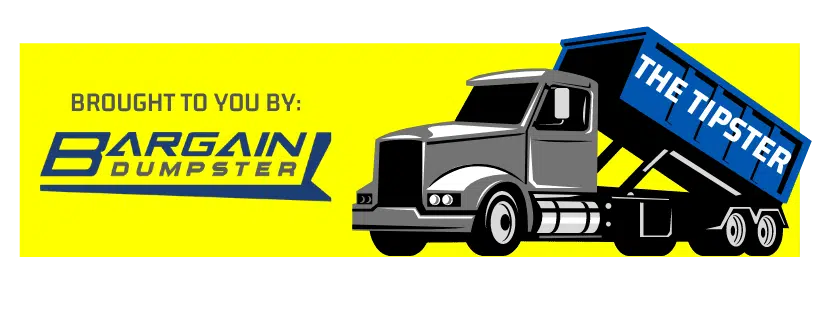How to Clean Up a Hoarder’s Home
Where do you even begin when helping a hoarder you love to clean up their home? The task can feel overwhelming, and it’s completely natural to feel that way! However, it’s necessary to approach this delicate project with compassion, patience, and love to achieve positive, lasting results.
Consider this your ultimate guide to cleaning out a hoarder’s home. Let’s start at the beginning; a perfect place to start.
Assess and Form a Plan
If you fail to plan, you plan to fail – especially when dealing with a hoarding situation. Taking some preliminary steps before you even enter the house will set you up for success.
First, address the person struggling with hoarding and work with them to create your plan of action. Clearing out a bunch of stuff and sanitizing their living space will provide healthy living conditions, but it will not produce lasting change in their life. Assess their needs on a mental and emotional level as well to make your efforts impactful as possible.
Next, recruit help to assist you with the project. If the situation is relatively safe and there is just clutter stacked up, ask family or friends to help you make quick progress. However, if there are additional risks such as structural damage, animal waste, infestations, or mold, and other toxins, DO NOT attempt to resolve it all yourself. Call in a professional cleaning service that specializes in hoarding. They know how to handle those dangers safely and effectively.
Once you have had an open dialogue with your loved one and have determined your plan of action, it’s time for the next step.
Photo by Bich Tran from Pexels
Gather Equipment and Supplies
Even if you are not planning to enter the home directly, it’s still wise to bring gloves and face masks. You will be sorting and handling a lot of items outside the house, and it’s best to protect yourself when coming into contact with anything from the hoarder’s environment.
Working on the site can expose you to a myriad of biohazards (E. coli, Staph, Hantavirus), so wearing protective equipment should be top of mind at all times. In addition to masks and gloves, you should also consider protections such as a first-aid kit, a fire extinguisher, bug spray, and a flashlight in case of emergency. Finally, gather the necessary cleaning supplies. You will need lots of cleaning agents, disinfectants, boxes, and heavy-duty trash bags.
Photo by Darren Halstead on Unsplash
Implement a Staging Area, Ensure Clear Pathways to Exits
Rest assured, there will be no performances associated with the staging area! It is just an open space to temporarily move the things from inside the hoarder’s house so they can be sorted and sanitized. You will most likely need to set up the staging area outside somewhere because the porch, basement, and most rooms will be so full of clutter there won’t be room.
Once your staging area is established, you or your hired help can begin to clear out belongings from inside the hoarder’s home. It is best to start with the room closest to the door and carve out a clear path to the exit. If there is an emergency, clutter and waste may slow down your escape and make the situation even direr.
Don’t forget to make arrangements for a dumpster on your cleanup day. You will need a lot of space to put discarded items and garbage as you clean. Many dumpster rental companies will work with you to determine the best size and type of dumpster for your project. Bargain Dumpsters’ nationwide services can make it even easier by assessing your budget, timeline, and space needs. The friendly staff will take out all the guesswork for you so that you can focus on the task at hand.
Start Small
A best practice of hoarding cleanup is to start with a small room, ideally the bathroom. The bathroom rarely has any valuable items hiding in it, so you can quickly clear out any half-used bottles, old towels, and trash. Plus, you will need the running water for the rest of the day!
Wipe down all the surfaces with a necessary sanitizer at first; then, you can come back later for a deeper clean. Then, move on to another “mostly trash” room like the kitchen. Get as much waste out of the house as possible to maximize the time you have with your help, your dumpster, and your hoarder’s emotions.
Save more complicated areas, like bedroom closets and other storage areas, for later in the project. They tend to be more tedious areas to work through, and will most likely be overflowing with belongings and waste.

Rule of Three
Be extra careful when going through piles of papers! It would be best if you stayed on the lookout for family photographs, bank account numbers or statements, insurance policies, and relevant receipts. These may have gotten mixed in with useless magazines or newspapers over the years.
Aftermath
Once all of the clutter is removed, make any necessary repairs before going back in for a final deep clean. If no significant repairs are needed, perhaps consider painting the walls and restoring the floors before moving your loved one back in. Be sure to thoroughly disinfect E V E R Y T H I N G in the house, and wash or replace all the linens such as curtains or rugs.
Remember that hoarding is a result of a mental disorder. Maybe your loved one is suffering from hoarding disorder specifically, or perhaps the hoarding is a symptom of another disease. Regardless, seeking professional help for your loved one is the most crucial step of all. A qualified therapist can help you and your loved one to navigate this journey – you don’t have to go it alone.






